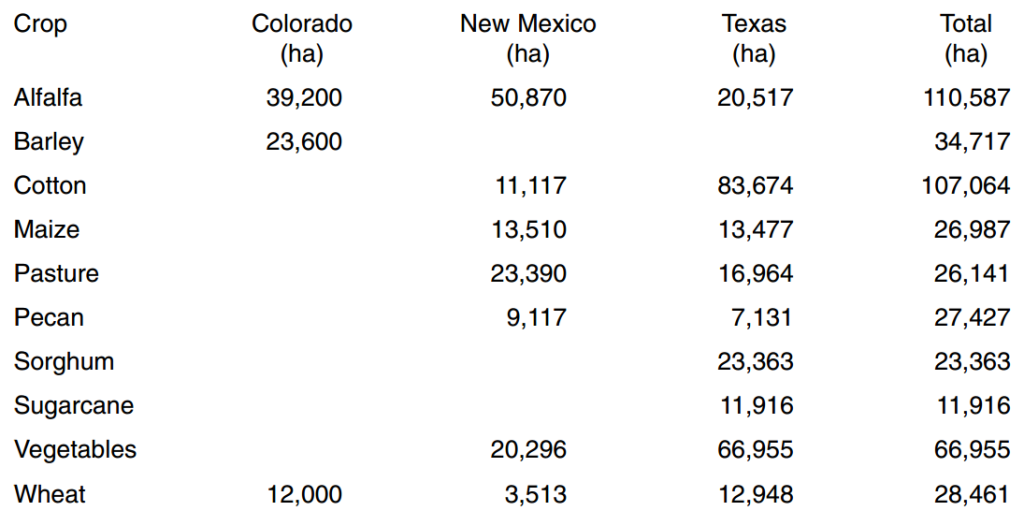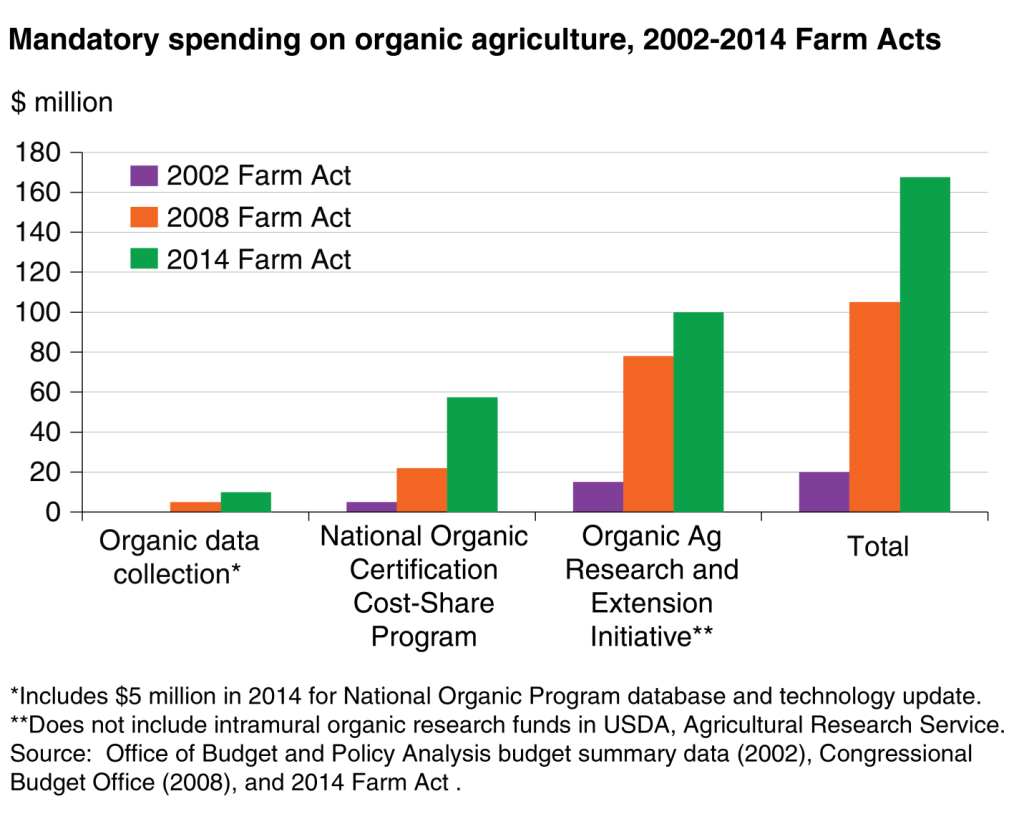
Let me begin by saying that I’m not a fan of organic anything and even when I am in an industry (health and sustainability) that advocates in favor of organic farming, I tend to stay away from ideologies and stick to science. The scientific community is also somewhat split around this debate but there are studies and information that can help us make a more informed decision.
The rise of countless organic products and the increasing concerns over non-organic farming make this an extremely relevant topic for conscious consumers. Whenever I’ve sat down to browse information about this, I often find many articles published by parties that have a conflict of interest, whether an organic cotton manufacturer or an international regulating body, so I’ve never felt 100% sure about what “most people” are saying, as their arguments lack scientific quality.
First of all, what’s really the problem with cotton farming? Just like any other type of farming, cotton entails intensive use of land, water and agrochemicals to bring the final product to market. If this is necessary for most crops, why are we talking about cotton in such a particular way? Here are some facts about cotton that make it an interesting case:
- It can take more than 20,000 liters of water to produce 1 kg of cotton; equivalent to a single T-shirt and pair of jeans.
- 73% of global cotton harvest comes from irrigated land
- 4% of the world’s crop land is planted with cotton and yet it accounts for 24% and 11% of the global sales of insecticide and pesticides respectively.
- The use of genetically-modified cotton varieties has increased in recent years reaching 20% (67.7 million ha) of the global crop area in 2002.
Source: WWF
Even taking these figures with skepticism and correcting for the fact that they aren’t up to date, it seems there are legitimate reasons to be concerned. But just how much is this an imminent problem and how much is it another attempt to take money out of our pockets?
The cotton industry has been linked to forced labor and farmers suicides, but this does not depend on the crop being grown organically or not; the unsustainable volumes are driven by global apparel demand and the culture of fast fashion, among other factors.
I decided to find the truth myself, as an objective consumer who simply wants the facts and who frequently suspects about dubious marketing strategies.
I started by finding out how is organic cotton precisely defined and realized that the definition depends greatly on the international body accrediting the fiber as organic or dictating policy on this matter. The following table presents a summary of my findings:
Table 1
Definitions of organic
| Organic cotton is grown using methods and materials that have a low impact on the environment. Organic production systems replenish and maintain soil fertility, reduce the use of toxic and persistent pesticides and fertilizers, and build biologically diverse agriculture.Source: OTA, 2010 |
Thekeycriteriaforfiberproductioncan be identified as:
Source: , 2014 |
Organic agriculture produces products using methods that preserve the environment and avoid most synthetic materials, such as pesticides and antibiotics. USDA organic standards describe how farmers grow crops and raise livestock and which materials they may use.Organic farmers, ranchers, and food processors follow a defined set of standards to produce organic food and fiber. Congress described general organic principles in the Organic Foods Production Act, and the USDA defines specific organic standards. These standards cover the product from farm to table, including soil and water quality, pest control, livestock practices, and rules for food additives.
Source: USDA, 2014 |
Organic material: anyoutputoforganicfarmsthathave been certified byanaccreditedcertificationbodytocomply with:
Source: Organic Content Standard, 2013, p. 6 |
These are just general guidelines, and digging deeper, the specifics can change quite a bit, especially between USDA and GOTS. Though, there are two major topics we can identify to guide the discussion:
- Use of synthetic substances
- Use of Genetically Modified Organisms (GMO)
Both of the standards we will focus on make it clear that the certification is about the process, not just growing the crop. Many steps are covered, from seeds treatment, to crop washing, labeling and containers utilized.
What kind of chemicals are allowed?
There are a few misunderstandings with organic farming, for example, that organic means no pesticides or herbicides at all. As explained in this article, the organicness is in the “nature of the pesticides”, not the absence of them; however, this has changed and the regulations are revised constantly. Now (in the US) certain synthetic products are allowed by the National Organic Program. Here is a list of the substances allowed by the USDA standards, which include both natural and synthetic agents:
Table 2
USDA approved pesticides and fertilizers
|
Allowed pesticides
Allowed fertilizers
The OMRI and WSDA lists establish which specific products are compliant with USDA standards. Source: USDA Guide for Organic Crop Products, 2012, p. 38 |
| View full list of Synthetic substances allowed for use in organic crop production. |
| View full list of Nonsynthetic substances prohibited for use in organic crop production. |
GOTS specifies which substances are prohibited, and the limited use of synthetic substances is also contemplated.
Table 3
GOTS allowed substances
They present a list of what is NOT allowed (see GOTS standards, p. 9), major chemicals including:
The standard seems very strict, including specific conditions for dyes and finishing treatments, which can’t be found in USDA standards. The use of certain synthetic materials are allowed and sometimes regulated for maximum quantities permitted (example: elastane). |
Summarizing, the use of pesticides is allowed, natural and synthetic (in moderate quantities). However, as a reminder, just because something is organic in nature, it doesn’t mean that is harmless. Rotetone, for example, is a natural pesticide used widely since the 1800’s until it was discovered that it caused symptoms similar to Parkinson’s disease in rats; its use seems to have diminished extensively and it is not included on the FDA or OMRI “white” lists, but it has not been officially banned.
It has also been found that some natural pesticides can be even more dangerous that synthetic ones. In a study funded by the Natural Science and Engineering Council of Canada, six different insecticides were analyzed: four were synthetic and two organic; the organic ones turned out to be more toxic than their synthetic counterparts:
Table 4

We completed laboratory assays to estimate the direct contact toxicity of these insecticides to several natural enemy species when applied at field rates. There were significant differences in mortality by treatment applied for all insect groups, but generally, the two currently registered insecticides were most toxic to natural enemies under laboratory conditions. The other four insecticides were much less toxic to the ladybeetle, though it was found that one of the organic insecticides, Beauveria bassiana, was slightly more toxic to adults, and one novel synthetic, flonicamid, was slightly more toxic to larvae than the remaining novel insecticides. The four novel pesticides all caused some mortality to the insidious flower bug, but the two organic insecticides had significantly higher toxicity than the two novel synthetic insecticides.
So, organic does allow the use of some non-natural agents and many natural ones that aren’t necessary harmless. The lesson here is not to discredit anything organic, but rather, take into account that it is a fairly young practice and thus, an imperfect science. There is a lot to do in terms of measuring the real effects or organic farming and creating alternative agricultural products that don’t damage the environment in excess, but this task is not easy or cheap.
GMO panic? No need to
In regards to GMO, both standards seem to definitely oppose its use. This can contribute to make organic farming more expensive and labor intensive, since the lack of regular pesticides makes it necessary to check the crops more regularly and to use techniques that could be defined as less efficient, from a financial point of view. GMO’s are controversial and deserve a separate article, but there is plenty of room to believe they are not the devil we have been taught to hate, but could actually help reduce the need for pesticides, making crops more resistant to predators.
Something not many people are talking about is the fact that organic agriculture is less efficient, meaning that the same amount of resources produce a lower volume of product, compared to traditional farming. This is extremely important, because if we are talking about sustainability, the scarcity of resources has to be taken into account: world hunger and clean water are two areas in which efficiency is capital to build a sustainable future. A 2001 study on organic cotton farming efficiency conducted in Greece, showed that organic farms produced only 73% of the yield of those of a conventional farm and 86% of the revenue (p. 40). More recently, a study published in Nature titled Comparing the yields of organic and conventional agriculture revealed that:
The average organic-to-conventional yield ratio from our meta-analysis is 0.75 (with a 95% confidence interval of 0.71 to 0.79); that is, overall, organic yields are 25% lower than conventional.
Source: How land-inefficient is organic agriculture?
The study is, of course, dated, but it shows a very important aspect about the organic culture that supporters of the movement are not telling us.
Another worry: Water
This article recently published on The Guardian about the Aral Sea disappearing from central Asia’s landscape. The piece reads:
“Conventional cotton (as opposed to organic cotton) has got to be one of the most unsustainable fibres in the world,” says fashion designer and environmentalist Katharine Hamnett. “Conventional cotton uses a huge amount of water and also huge amounts of pesticides which cause 350,000 farmer deaths a year and a million hospitalisations.”
Pesticides are not only strong chemical agents released in the environment that can pollute and distort ecosystems, but some aren’t even tested properly to assess their effects. This is concerning, but when it comes to organic cotton, there is nothing about it that helps saving water, as that is not one of the factors to be considered organic on any of the standards I have looked into. Organic cotton is just as bad as regular cotton in this aspect. It is better for the environment because it limits the quantities and kinds of chemicals used, but that also doesn’t mean it’s completely harmless, since some “natural” pesticides can be just as toxic as chemical ones.
Cotton is one of the most water intensive crops, according to the WWF, cotton is the second thirstiest crop in industrialized countries and the fourth in developing countries:
Table 5
Crop ranking by water consumption

Source: Agricultural Water and River Basin Conservation, 2003, p. 34
Table 6
Major irrigated crop areas in US states in the Rio Grande Basin

Source: Agricultural Water and River Basin Conservation, 2003, p. 30
For perspective, depending on climate and length of the total growing period, cotton needs some 700 to 1300 mm to meet its water requirements (ETm), while wheat water requirements (ETm) are 450 to 650 mm depending on climate and length of growing period, sugarcane needs 1500 to 2500 mm evenly distributed over the growing season (ETm), sunflower needs between 600 and 1200 mm and potato crop water requirements (ETm) for a 120 to 150 day crop are 500 to 700 mm, depending on climate. Ok, ok, I’ll make a table… (In case that, like me, you had no idea what ETm was).
Table 7
Crop water requirements
| Crop | Water requirements |
| Sugarcane | 1500 – 2500 mm |
| Banana | 1200 – 2500 mm |
| Alfalfa | 800 – 1600 mm |
| Cotton | 700 – 1300 mm |
| Sunflower | 600 – 1200 mm |
| Wheat | 450 – 650 mm |
| Maize | 500 – 800 mm |
| Tobacco | 400 – 600 mm |
| Soybean | 450 – 700 mm |
* Figures in mm per year or per growing season, in cases when the crop is not grown during a full year. They are approximate and not strictly comparable.
Source: FAO.
Even when this figures are not perfectly comparable, it is clear that cotton is not the only water needy crop. Yet I don’t hear people very often complaining about how much water is used in wheat or sugarcane.
Conclusion
Why is this important? Even if you don’t care too much for the materials used in your clothes, farming standards affect everybody, not only from an environmental standpoint, but also as taxpayers. The Farm Act has been increasing the spending on organic agriculture, reaching $100 million in research, $15 million in program enforcement and $57.5 million in certification funding for small producers in 2014, the following graph shows the spending levels in the last three versions of the Act:

Source: USDA.
Again, organic cotton is a good initiative and its true environmental impact will depend on the technological advancements that improve farming efficiency, but it is not going to save the world. Also, as consumers, we cannot accept cheap propaganda that takes advantage of the organic movement to shamelessly promote products that are not in essence sustainable. Organic cotton still implies using some chemicals, a lot of water, labor and land in a rather inefficient way. We are making a decision that a world with less toxins is worth paying for and that, over time, those efforts will pay off. Companies engaging in organic cotton manufacturing are taking a risk, not only financial but operational, given the challenges and higher variability of organic agriculture. Those efforts are appreciated and, as consumers, we have to look much closer and evaluate the big picture and the entire supply chain, not just whether something is organic or not.
While some companies have a schedule to use only “more sustainable cotton”, which includes organic and recycled cotton, in a few years (see report, p. 13), other retailers like Patagonia have been doing so since 1996. They recognize, though, that there is still a lot to do in terms of garment recycling, water use and soil management.
With respect to the 2012 article quoted previously “Comparing the yields of organic and conventional agriculture” published on Nature, the co-author Jonathan Foley told the New York Times that:
Looking forward, I think we will need to deploy different kinds of practices (especially new, mixed approaches that take the best of organic and conventional farming systems) where they are best suited — geographically, economically, socially, etc.
Source: NYT
The organic quality of the fibers used in textile manufacturing is just a piece of the puzzle. Any agricultural activity puts a strain on our environment and ultimately affects the available resources we have for other activities. In the future, the use of soil, labor and scarce resources will have to come down to a matter of priorities: do we eat or do we make more clothes? Do we have potable water to drink at reasonable prices or have more “stuff” in our houses? To me, the future of this debate will evolve around creating the right system to replace cotton with other fibers that require less chemicals and water, such as bamboo.
Whether it is clothes, food, furniture or home appliances, the question to ask is not only: do I need it? But, is it worth it?
Resources
The following articles illustrate the open debate in regards to the sustainability of organic farming:
Whole Food Blues: Why Organic Agriculture May Not Be So Sustainable | TIME
Organic Farming is Not Sustainable | WSJ
A Response to The Wall Street Journal article: “Organic Farming Is Not Sustainable” | The Cornucopia Institute
Response to The Wall Street Journal article: “Organic Farming Is Not Sustainable” | The Organic Center
Why Organic Isn’t ‘Sustainable’ | Forbes
Video: White Gold: The True Cost of Cotton
Video: Cotton Farming in Uzbekistan/Interview with American Scholar Russell Zanca
